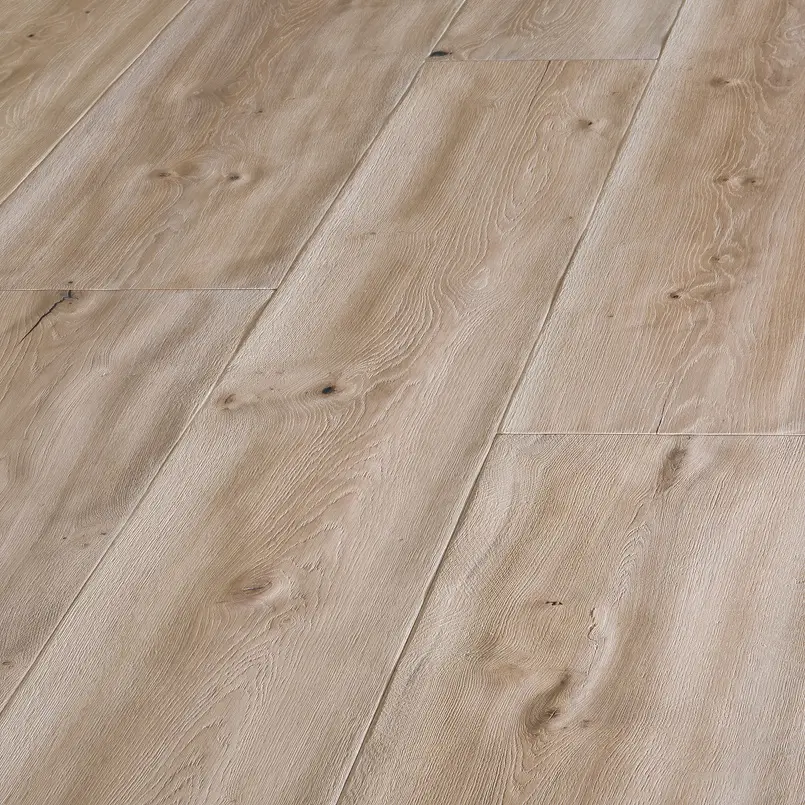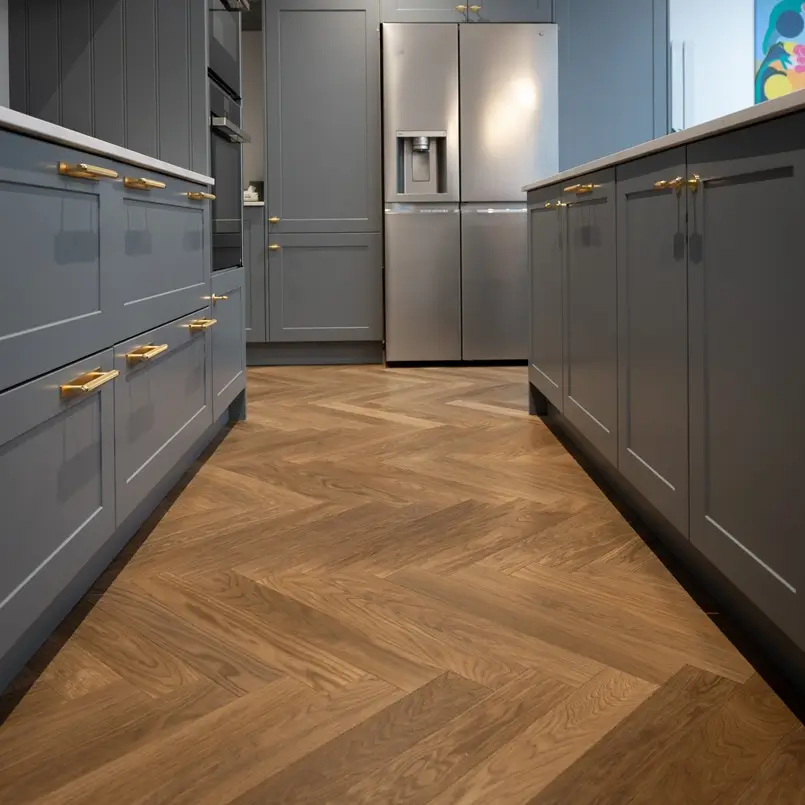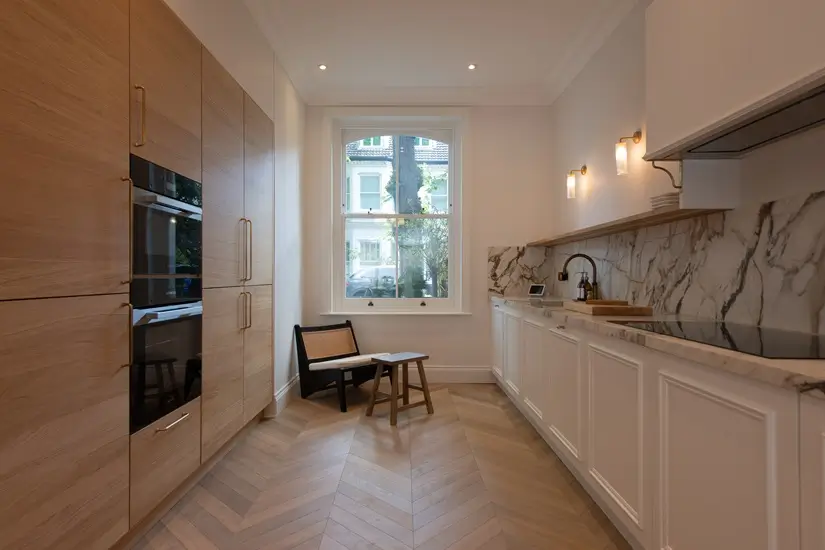Flooring plays a crucial role in maximizing light and creating a sense of flow in the kitchen. Adam Robertson, Managing Director at Urbane Living, shares a few expert tips on how to choose the best flooring for your kitchen. Discover more in this design tips article.
Kitchen Flooring – Light and Dark Tones

When designing a kitchen, the key is to maximize light and create a sense of flow. Flooring plays a crucial role in achieving this balance, and the choices you make at the outset can dramatically influence how the space feels day to day.
While lighter tones such as pale oak or elm can help reflect natural light and make the space feel larger, it’s important to consider the contrast between your flooring and kitchen units. If you have light cabinetry, a medium or slightly darker floor can provide definition and depth, while darker units pair beautifully with lighter floors to create balance and prevent the space from feeling too heavy. These carefully considered tonal choices work particularly well in modern kitchen designs, where openness and airiness are prioritized.
Flooring for a Kitchen Extension

If the kitchen forms part of an extension, it’s best to choose a continuous floor finish that runs seamlessly from the existing space into the new area. This approach avoids visual breaks that can fragment the layout and make the room feel smaller or disjointed. A unified floor creates a smooth transition between old and new, helping the eye move naturally through the space and reinforcing the sense of a single, expansive area rather than two separate rooms awkwardly joined together.

To maximize impact, keep the design simple and avoid excessively dark finishes or busy patterns that may close the space in. While rich, dramatic tones can work beautifully in larger rooms, they tend to absorb light in more compact settings, creating a heavier, more enclosed atmosphere. Instead, focus on clean lines and understated elegance. Large-format planks are an excellent choice for this reason; their generous proportions reduce the number of joins across the floor, creating a sleek, uninterrupted surface that elongates the room. Alternatively, a refined herringbone pattern can add subtle visual interest while still drawing the eye through the extension, making it feel more expansive and thoughtfully designed.

It’s also important to balance materials and finishes throughout the space. Too many contrasting elements, whether in color, texture, or style, can overwhelm a compact extension and create visual clutter. A restrained palette, on the other hand, creates a sense of calm and unity, allowing individual design features to shine without competing for attention. This doesn’t mean the space has to feel bland or monotonous; rather, it’s about choosing complementary tones and textures that work harmoniously together.
Related Article: How to Choose the Best Kitchen Colors by Decorative Style
Practicality Goes Hand in Hand with Aesthetics

For kitchens in particular, practicality must go hand in hand with aesthetics. Consider opting for a lacquer finish on your flooring. Lacquer offers easier maintenance and adds resistance to spills, stains, and the general wear and tear that comes with a busy cooking space. It provides a protective layer that enhances durability without compromising on style, making it an ideal choice for families or anyone who uses their kitchen frequently. The finish also has a subtle sheen that can enhance the lightness of the room, reflecting both natural and artificial light to keep the space feeling bright and welcoming throughout the day.
Kitchen Flooring Specialists Advise on the Best Wood Species and Finishes

When planning your kitchen flooring, it’s worth consulting with specialists who can advise on the best wood species and finishes for your specific layout and lifestyle needs. The right flooring choice will not only elevate the design of your kitchen but also stand the test of time, maintaining its beauty and functionality for years to come. Investing in quality materials and expert installation ensures your kitchen remains a space you’ll love to cook, gather, and live in daily.
Text: Adam Robertson, Managing Director at Urbane Living, urbaneliving.co.uk
Photos: Urbane Living / Baytree PR
For more design and travel ideas, you are welcome to follow Archi-living.com on Facebook, Instagram, and LinkedIn, and discover these related articles.



